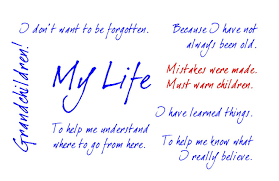Writing an autobiography can be an incredibly rewarding and insightful process. By reflecting on your life experiences and putting them into words, you can gain a deeper understanding of yourself and your journey. In this article, we’ll explore some tips and techniques for writing your own autobiography.
Step 1: Start with Reflection
Before you begin writing, take some time to reflect on your life experiences. Consider the defining moments, challenges, and triumphs that have shaped your life. Reflect on your childhood, your family, your relationships, your career, and your personal growth. Write down your thoughts and feelings, and try to identify recurring themes or patterns.
Step 2: Create an Outline
An outline can help you organize your thoughts and create a structure for your autobiography. Start with a rough outline that includes key milestones and events in your life, and then fill in the details. Consider organizing your autobiography by theme, chronology, or both.
Step 3: Write from the Heart
When writing your autobiography, it’s important to write from the heart. Be honest and authentic, and don’t be afraid to share your vulnerabilities and struggles. This can help your readers connect with your story and gain a deeper understanding of your journey.
Step 4: Use Descriptive Language
Descriptive language can bring your autobiography to life and help your readers visualize your experiences. Use sensory details to describe the sights, sounds, smells, and emotions of the moments you’re writing about. This can help your readers feel as though they’re experiencing your journey alongside you.
Step 5: Seek Feedback
As you write your autobiography, it’s a good idea to seek feedback from others. Share your work with friends, family, or writing groups, and ask for their input. This can help you identify areas where your writing could be improved and ensure that your message is clear and effective.
Step 6: Edit and Revise
Once you’ve written your first draft, it’s time to edit and revise your work. Read through your writing and look for areas where you can improve your message or clarify your points. Check for grammar and spelling errors, and make sure your writing is free from typos and mistakes.
Step 7: Publish and Share
After you’ve revised your work and received feedback, it’s time to publish and share your autobiography. Consider publishing your work on a blog, social media platform, or self-publishing platform. Share your work with your friends, family, and community to increase visibility and engagement.
Writing your autobiography can be a powerful and transformative experience. By reflecting on your life experiences and putting them into words, you can gain a deeper understanding of yourself and your journey. Remember to write from the heart, use descriptive language, seek feedback, edit and revise, and share your story with others. Your life in words can inspire others and leave a lasting legacy for generations to come.





